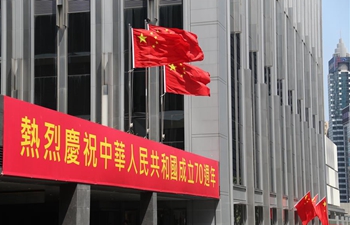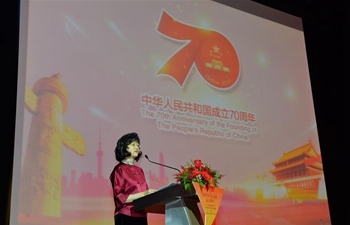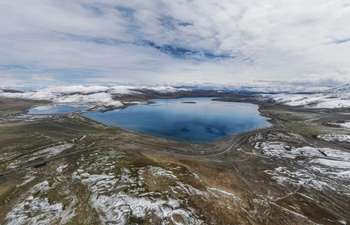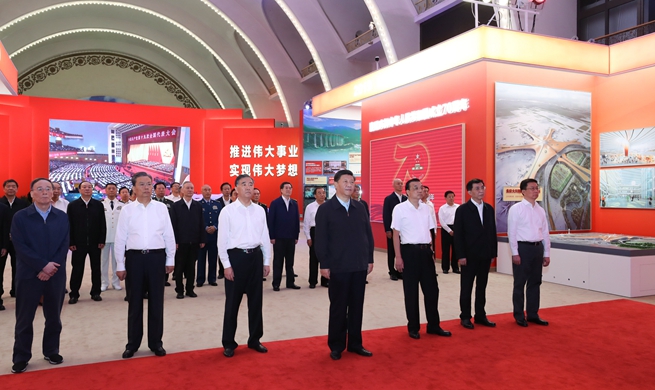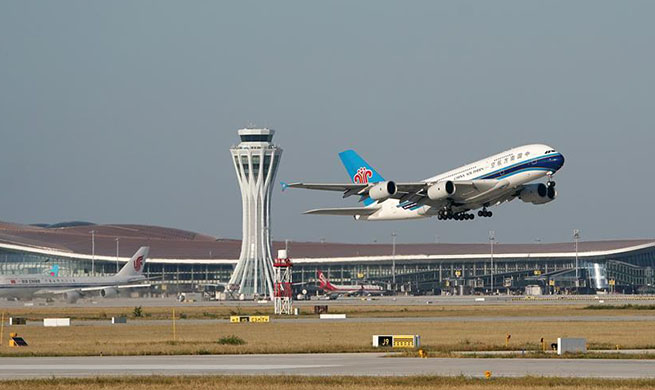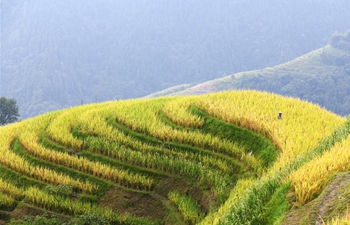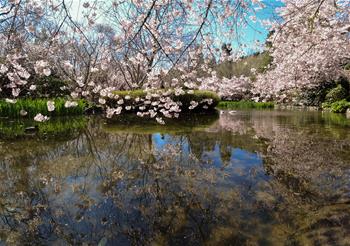URUMQI, Sept. 25 (Xinhua) -- Northwest China's Xinjiang Uygur Autonomous Region has entered a new era of development, unity and stability since its peaceful liberation on Sept. 25, 1949.
Here are some facts and figures about the region's tremendous social and economic progress over the past 70 years.
-- Xinjiang's GDP stood at 791 million yuan (111 million U.S. dollars) in 1952. Last year, the figure soared to 1.22 trillion yuan, an increase of about 200 times calculated at comparable prices. Over the period, the region's GDP recorded an average annual growth rate of 8.3 percent.
-- The central government has invested about 2.35 trillion yuan in Xinjiang over the past seven decades to boost the region's social and economic development. As China's largest provincial-level region in terms of landmass, Xinjiang now boasts 21 civilian airports and a road network connecting almost all villages across the region.
-- Xinjiang has seen continued optimization of its industrial structure, as the proportion of the three industries changed from 64.7: 22: 13.3 in 1952 to 13.9: 40.3: 45.8 last year. The tertiary industry including tourism and internet plus contributed to 62.3 percent of the region's economic growth in 2018.
-- Xinjiang's foreign trade volume reached 20 billion U.S. dollars last year, about 1,481 times of that in 1950. The region has been deepening economic exchanges and cooperation with the neighboring countries thanks to the China-proposed Belt and Road Initiative.
-- The region's urban and rural per capita disposable incomes both surged more than 100 times from 1978 to 2018. Last year, the figures were 32,764 yuan and 11,975 yuan, respectively.
-- Xinjiang has achieved a decisive advance in poverty alleviation over the past 70 years. From 2014 to 2018, about 2.3 million people were lifted out of poverty, with the region's poverty headcount ratio dropping from 19.4 percent to 6.1 percent.
-- With improved health care, the average life span of Xinjiang residents has risen from about 30 years in 1949 to 72.35 years at present.
-- In 1949, about 90 percent of Xinjiang's population was illiterate, and the enrollment rate of school-age children was less than 20 percent. Last year, the enrollment rate of school-age children at the primary school stage reached 99.91 percent.
-- Xinjiang has witnessed a tourism boom in recent years with its unique natural sceneries, folk culture and overall social stability. Last year, the region received more than 150 million tourists from home and abroad, up 40.1 percent year on year.





